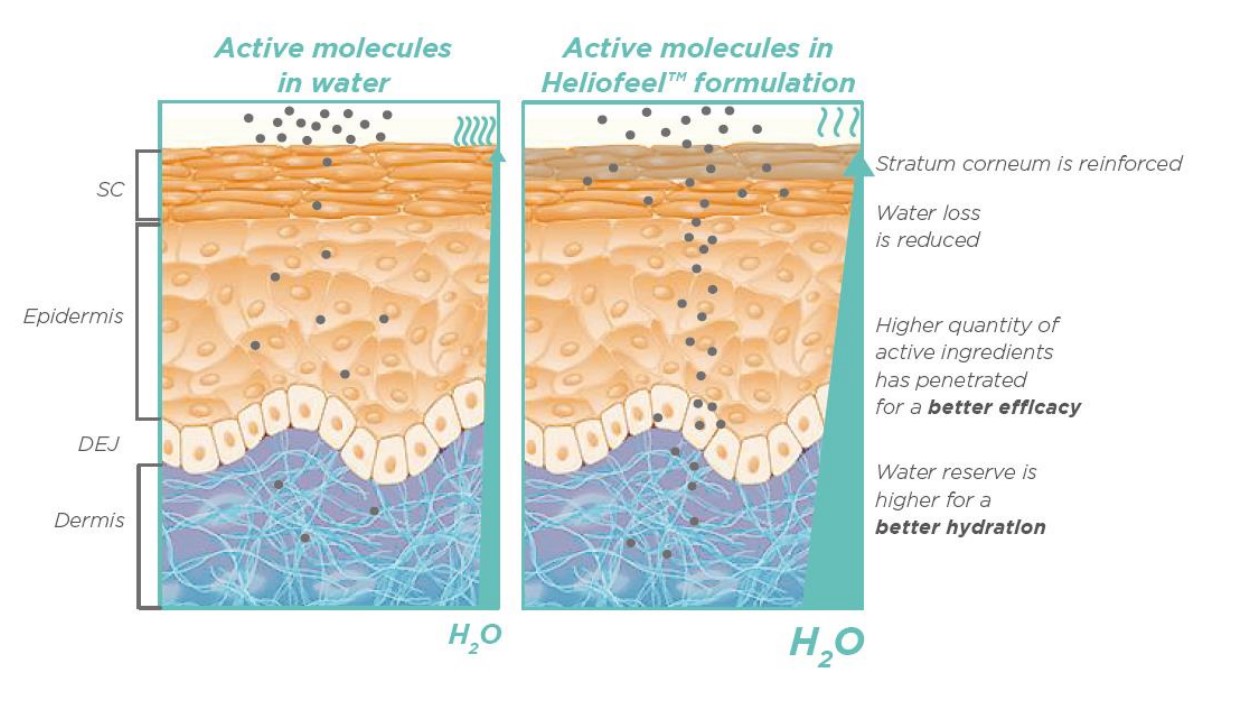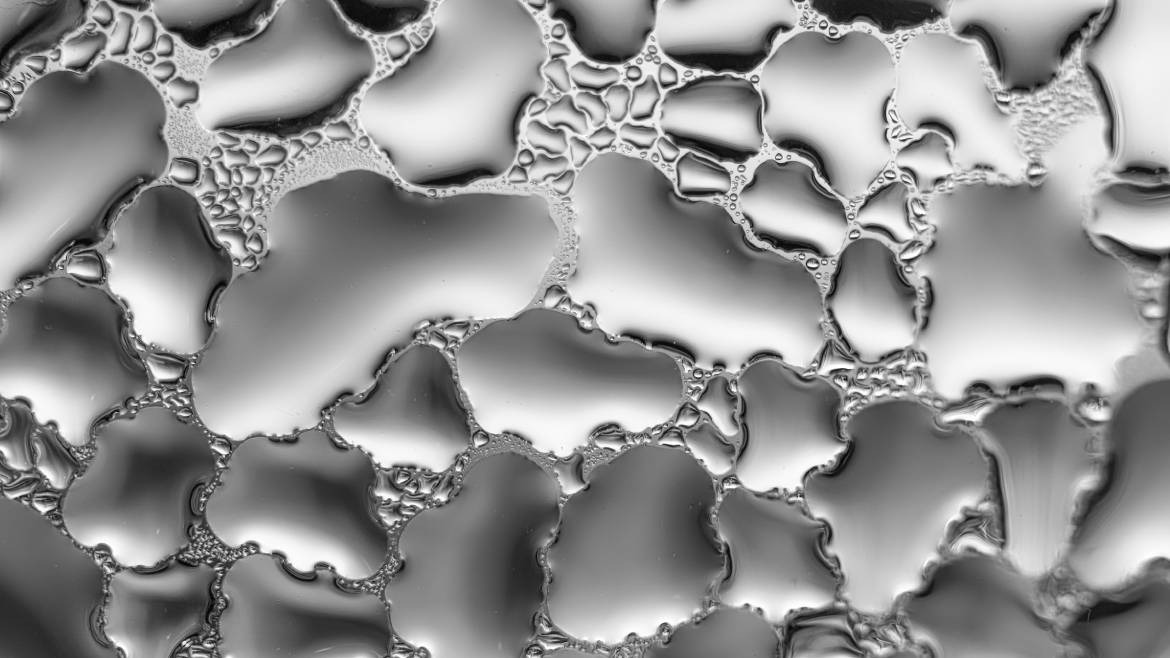- Valentine Du Bois
- 0 likes
- 16844 views
- 0 comments
Definition and concept
Cosmetic bioavailability is defined as the penetration rate or volume of product made available at its site of action1. However, the targeted location varies according to the product; for instance, a sunscreen is designed to remain on the surface of the skin and create a shield against UV rays. On the other hand, most active substances need to reach the deeper layers of the epidermis to work, as in the case of anti-aging or seboregulating active ingredients. It is thus essential for these products to be highly bioavailable.
That said, getting a product to penetrate the deepest layers of the epidermis is no easy task. Indeed, the outermost layer of the skin, the stratum corneum, has a lipophilic lamellar structure, making it very difficult for water-based products to penetrate. Studies have shown that in most cosmetic products, only a very small portion of the product actually penetrates the skin barrier.
Biotechnology
But there are ways of making active ingredients more readily absorbable; for instance, by creating a product that holds as much similarities as possible that natural skin molecules. Phospholipids, for example, which are naturally present in the skin, have been widely shown to improve the absorption of both hydrophobic and hydrophilic active ingredients2-5.
In formulating our products, we use lecithin, a phospholipid extracted from sunflowers. This phospholipid, with a structure identical to that of the cell membrane itself (lipid bilayer), fuses with the skin barrier, enabling the active ingredient to be brought to the core of its site of action6,7. Laboratory studies have shown that an active ingredient dissolved in this formulation is 4.8 times more bioavailable than the same ingredient dissolved in water (see diagram below). In addition, phospholipids have a film-forming property; by creating a protective layer on the skin, they help reducing trans-epidermal water loss and provide an immediate moisturizing effect.
As an added bonus, the lecithin we use in our emulsifiers is recycled from the food industry, as it is a by-product of organic oil production, promoting a circular economy and avoiding waste.
Thus, thanks to high bioavailability and optimized absorption, Beyond Men's Care products are not only truly effective, but also enjoyable to apply, leaving no unabsorbed oily residue.

References
1. Deckner G. How to improve the bioavailability and efficacy of skin care actives. Prospector Knowledge Center. Published September 20, 2019. Accessed February 23, 2023. https://knowledge.ulprospector.com/9837/pcc-how-to-improve-the-bioavailability-and-efficacy-of-skin-care-actives/
2. El Maghraby GMM, Campbell M, Finnin BC. Mechanisms of action of novel skin penetration enhancers: phospholipid versus skin lipid liposomes. Int J Pharm. 2005;305(1-2):90-104. doi:10.1016/j.ijpharm.2005.08.016
3. Engesland A, Skar M, Hansen T, Škalko-Basnet N, Flaten GE. New applications of phospholipid vesicle-based permeation assay: permeation model mimicking skin barrier. J Pharm Sci. 2013;102(5):1588-1600. doi:10.1002/jps.23509
4. van Hoogevest P, Fahr A. Phospholipids in Cosmetic Carriers. In: Cornier J, Keck CM, Van de Voorde M, eds. Nanocosmetics: From Ideas to Products. Springer International Publishing; 2019:95-140. doi:10.1007/978-3-030-16573-4_6
5. Sakdiset P, Okada A, Todo H, Sugibayashi K. Selection of phospholipids to design liposome preparations with high skin penetration-enhancing effects. J Drug Deliv Sci Technol. 2018;44:58-64. doi:10.1016/j.jddst.2017.11.021
6. El Maghraby GM, Barry BW, Williams AC. Liposomes and skin: from drug delivery to model membranes. Eur J Pharm Sci Off J Eur Fed Pharm Sci. 2008;34(4-5):203-222. doi:10.1016/j.ejps.2008.05.002
7. Le Joliff JC. Liposomes en Cosmétique. La Cosmétothèque. Published January 31, 2020. https://cosmetotheque.com/2020/01/31/liposomes-et-cosmetique/
By Valentine Du bois
Master's degree in medical biology, University of Lausanne, Switzerland
Valentine holds a Master's degree in medical biology from the University of Lausanne, following a Bachelor's degree from the University of Geneva. During her Masters, Valentine specialised in the fields of pharmacology and toxicology, focusing on applied laboratory research for the development of new treatments.



comments (0)